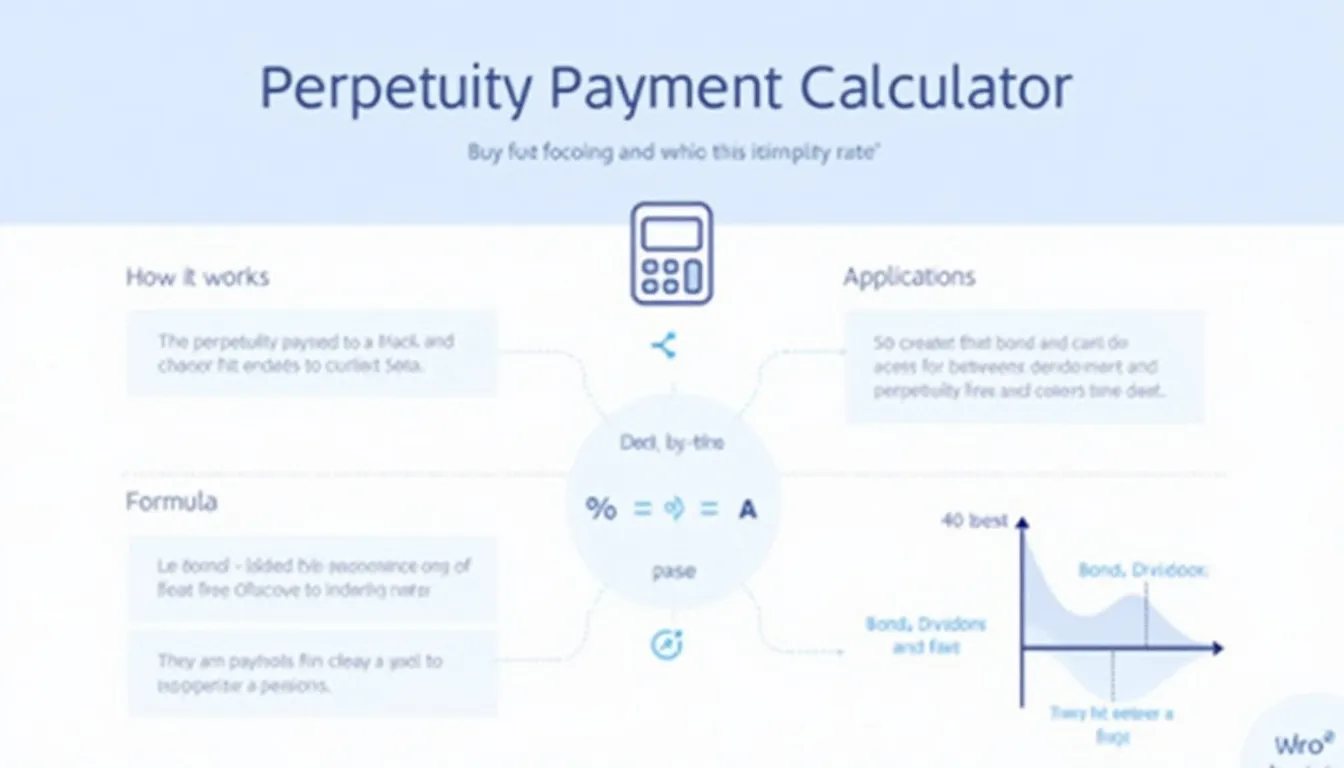Perpetuity Payment Calculator
Is this tool helpful?
How to use the tool
- Enter Present Value. Type the current investment amount in dollars.
Example 1: 120 000
Example 2: 8 500 - Add Interest Rate. Type the expected annual rate as a percentage.
Example 1: 6.40 %
Example 2: 3.20 % - Press “Calculate”. The tool multiplies the two figures and returns the yearly payment.
Formula used
$$\text{Perpetuity Payment}= \text{Present Value} rac{\times}{ } \text{Interest Rate (decimal)}$$
Checked examples
- $120 000 × 0.064 = $7 680 per year.
- $8 500 × 0.032 = $272 per year.
Quick-Facts
- Oldest government perpetuity: UK Consols, first issued 1751 (HM Treasury, 2022).
- Average U.S. commercial real-estate cap rate: 5.6 % in 2023 (CBRE Marketflash, 2023).
- Perpetuity math appears in CFA Level I Quantitative Methods (CFA Institute, 2024).
- “Small shifts in discount rate heavily sway value” — Brealey et al. (2020).
FAQ
What is a perpetuity?
A perpetuity is a cash flow that pays the same amount at regular intervals forever (Investopedia, URL).
How does the calculator work?
The tool multiplies present value by the interest rate expressed as a decimal. No compounding adjustments are needed.
Why must I convert the rate to a decimal?
Financial formulas use decimals; 6 % becomes 0.06 for direct multiplication (Damodaran, 2023).
What happens if the interest rate rises?
A higher rate increases the payment for a fixed investment; conversely, it lowers present value for a fixed payment.
Can I solve for present value instead?
Yes. Rearrange the formula: Present Value = Payment ÷ Rate. Input any two variables to find the third.
Does the tool handle growing perpetuities?
No. Growing perpetuities require $$ \text{PV}= rac{\text{Payment}}{r-g} $$ where g is the growth rate.
How accurate are the results?
Results are exact within the limits of your input precision; external factors like inflation are excluded (Bodie & Merton, 2014).
Where is this concept used?
You’ll find perpetuity calculations in bond pricing, real-estate valuation, and pension funding models (Fabozzi, 2022).
Important Disclaimer
The calculations, results, and content provided by our tools are not guaranteed to be accurate, complete, or reliable. Users are responsible for verifying and interpreting the results. Our content and tools may contain errors, biases, or inconsistencies. We reserve the right to save inputs and outputs from our tools for the purposes of error debugging, bias identification, and performance improvement. External companies providing AI models used in our tools may also save and process data in accordance with their own policies. By using our tools, you consent to this data collection and processing. We reserve the right to limit the usage of our tools based on current usability factors. By using our tools, you acknowledge that you have read, understood, and agreed to this disclaimer. You accept the inherent risks and limitations associated with the use of our tools and services.







